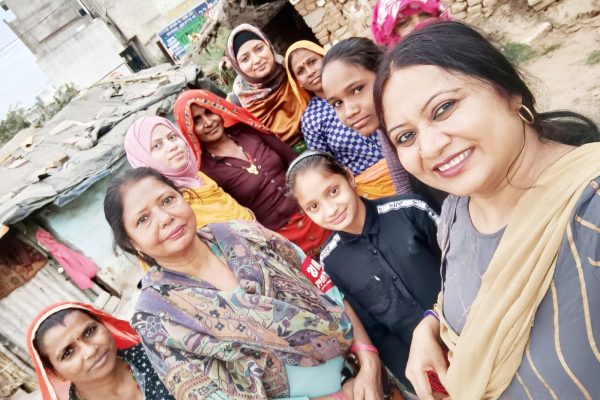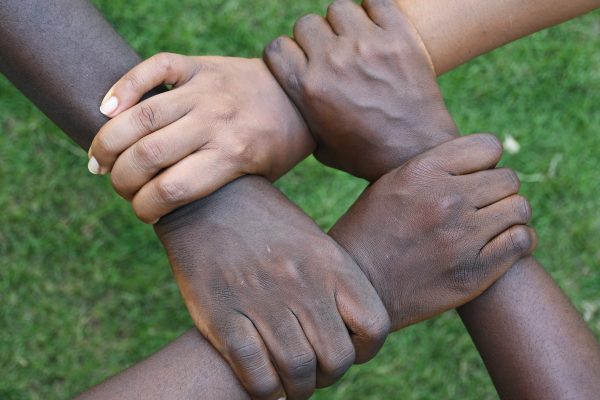The global coronavirus pandemic has dominated headlines over the past 18 months whilst other atrocities and injustices have been underreported and often removed from mainstream consciousness. However, these global challenges persist and deserve our energy and focus. Communities around the world have stood up collectively to #SpeakOut against these injustices. Over the coming weeks, we’ll be using our platforms to shine a light on a range of ongoing injustices, seeking to raise awareness and educate ourselves and others about what we can do as individuals to make a meaningful difference. We begin with the genocide of the Uighur people, whose plight has long gone ignored and grows more dangerous every day.
Who are the Uighur people?
Approximately 11 million Uighurs live in China’s north-western autonomous region of Xinjiang. They are a majority Muslim ethnic group of Turkic decent. The Uighur language is derived from Turkic, and uses Perso-Arabic script. Among their many traditions is the annual Meshrep festival, which is a gathering of music, poetry, dance, religious lectures, and food. The Uighur cuisine showcases hints of flavours and ingredients from all across Central Asia, a reflection of their ancient location along the silk road. As a result of persecution and erasure in China, the burden of preserving and expressing their culture and traditions lies heavily on the shoulders of the Uighur diaspora community. Many of the Uighur people abroad that choose to speak out against the atrocities perpetrated by the Chinese government risk putting targets on the backs of their family and friends in Xinjiang. Abduweli Ayup, a Uighur poet and activist, was detained and tortured for 15 years after founding an initiative to preserve and translate Uighur writings. His sister was forced to denounce him in court. After fleeing to Europe, he learned that a number of his family members and friends had been arrested as a result of his activism.
Since 1955, the population of Uighur people in the region has declined by 58%. Examining the history of China’s antagonistic relationship with the Muslim minority reveals a steady escalation to violence in present-day internment camps.
In the 1940s, only 6% of the population in Xinjiang was Han Chinese while Uighurs made the majority. During this time, The Chinese Communist Revolution brought a bout of violence to the region at the hands of the Red Guards. Anything that did not align with communist ideology was considered not “revolutionary,” and was destroyed as a result. This included mosques, books, and any religious, cultural, or historical symbols that distinguished the Uighur identity. This continued into the 1970’s with the Chinese Cultural Revolution, which not only repressed more of the cultural identity of ethnic minorities, but also stalled the country’s economy. The Uighur people, though traumatized by what they had experienced, remained resilient in the face of systematic erasure, and come the 1980’s, created for themselves a golden age of celebration and enlightenment. A renaissance of thought, art, music, and film was ushered in by a period of self-expression and a move towards liberalism in China.
Meanwhile, the Chinese Communist Party (CCP) began to gain traction, and rose as a conservative political power in 1987. In response, the call for democracy grew even louder. In 1989, University students and unarmed citizens began occupying spaces in Beijing to demand political change. The government’s response to the demonstrations was violent military suppression. The whole world watched on June 4th 1989 as images from Tiananmen Square emerged, where military tanks and armed troops were deployed. Thousands of students and unarmed citizens were massacred, and as many as 10,000 more were arrested. The events at Tiananmen Square struck a fear of nationalism and separatism for those in power. And the Uighurs, who had become more self-governing and open with their cultural identity, were a prime target for these anxieties.
Despite no evidence of an organized militant movement for independence, the region of Xinjiang was characterized as a security threat. And so, once again, the Uighur people were subject to censorship and religious repression. Throughout the 1990’s, a pattern of conflict emerged between the CCP and the Uighur people. Oppressive policies were rolled out one after the other and met with resistance from the Uighurs, which triggered more restrictive laws. At the same time, China was flourishing economically, well on its way to becoming a leader in global production. Han Chinese people were brought to Xinjiang in droves to work in the factories being built there. The Uighur people were largely excluded from benefiting from the same economic opportunities that the incoming Han people benefited from.
The tragedy of September 11th, 2001 sent shockwaves around the world. We often forget that day had far-reaching repercussions beyond the United States and the Middle East. Muslims globally were stereotyped as terrorists, despite their geographical, ideological, cultural, and ethnic diversity. This made it possible for the CCP to target the Uighur population within their borders more intentionally. China released documents linking 40 diaspora groups from the US, Turkey, and Europe to networks associated with Al Qaeda. At first, these were dismissed as illegitimate and unsubstantiated claims by the US. Then, in 2002, the US recognized one of the groups identified as potentially linked. So began China’s War on Terror. Their counterterrorism campaign focused on three areas: extremism, terrorism, and separatism. Included under the umbrella of separatism was ideological separatism. This meant that the government had the power to ban and punish anything that had to do with history, culture, and language, that did not align itself completely with the Chinese national identity that the CCP defined.
All the while, the influx of Han migrants continued. Mosques and other cultural heritage sites were destroyed to make way for developments. The Uighur people faced discrimination and economic inequality. In 2009, an unsubstantiated rumour about Uighurs raping a Han woman in a toy factory proliferates on the internet. In retaliation, it was reported that Han Chinese workers killed two Uighur men. The Uighurs took to the streets in protest, demanding justice for the murdered men. What followed was a marathon of violent clashes between the two ethnic groups which resulted in dozens of deaths. The government intervened and established a police state. The Uighur population was put under constant surveillance. On highways, checkpoints were installed through which Han Chinese people could pass through without stopping while Uighur people were thoroughly checked and interrogated. Mosques were emptied. Hundreds of Uighurs were arrested and detained. This triggered a mass exodus of Uighurs to Turkey as people fled persecution.
In 2017, the first reports of internment camps emerged. American journalist Rob Smith spoke to one former prisoner who described being stripped naked and interrogated for hours, tortured with an iron coat, and surveilled for his reaction to audio being played on the loudspeaker in his cell. The CCP was quick to deny the accusations, calling the facilities “vocational training centres.”
Life as a Uighur in China
The reality of these internment camps is grim. The information we do know about what goes on inside comes from former prisoners or daily and friends of prisoners. We do know that over 3 million people, Uighurs and other Muslim ethnic minorities, have been detained in these camps. There are reports of political indoctrination, torture, sexual assault, forced sterilization, and involuntary labour. Even for those not detained in Xinjiang, life is not easy. Over 5,000 mosques in East Turkestan have been destroyed. The Uighur people are not allowed to practice their religion. Praying, fasting, Islamic weddings, Eid celebrations, Islamic greetings, and halal food are all banned. They are under constant surveillance, even in their own homes, where 1 million ‘guests’ have been placed as government informants. Facial recognition software and surveillance systems were installed in majority Uighur areas and near mosques. Uighurs are required to submit samples of their DNA to the government’s records. Mobile spyware and vehicle tracking are used to monitor their activities. Heavy policing, travel restrictions, forced labour, and confiscation of property are among the other tactics being used to oppress the Uighur people.
All of these violations reflect an attempt by the Chinese government to erase the Uighur minority identity and homogenize them into the country’s majority Han Chinese majority. The Chinese government is committing crimes against humanity by systematically and arbitrarily imprisoning, persecuting, and torturing a group of people. What is happening is cultural genocide: the systematic destruction of traditions, values, language, and other elements that make one group of people distinct from another.
What you can do to help
There are a number of ways we can actively push for justice for the Uighur people. The first is to raise awareness about their plight and to uplift and amplify Uighur voices and stories. Follow and share the content of creators like Tomomi Shimizu, a Japanese manga artist who told the story of Mihrigul Tursun, a Uighur woman detained three times by the Chinese government through her art. Share the poetry of Abduweli Ayup, who is immortalizing the Uighur experience through the written word while he lives in exile in Norway. Or Feroza Aziz, an influencer who raised awareness about the atrocities in a Tik Tok video disguised as a makeup tutorial in order to evade the Chinese platform’s censorship.
You can also put pressure on public officials to take action by signing petitions and calling your local representative. The reality is that your representative works for you, and your voice holds tremendous weight and influence in the decisions they make. Similarly, you can help hold corporations and organizations accountable. In 2020, Apple was accused of working with suppliers in China that used forced Uighur labour. The company that owns Tik Tok also owns the social media app used in China which aids the CCP in censoring a wide range of content, including content about the Uighur people. The 2022 Olympics are even set to be held in Beijing, despite international recognition of China’s crimes against the Uighur people. Urge your nation’s Olympic Committees to boycott the Olympic games by signing petitions and raising awareness to increase pressure.
The world cannot continue to turn a blind eye to the suffering of millions of people. History has taught us the consequences of doing so are grave. Now is the time to speak out against the persecution of the Uighur people.




